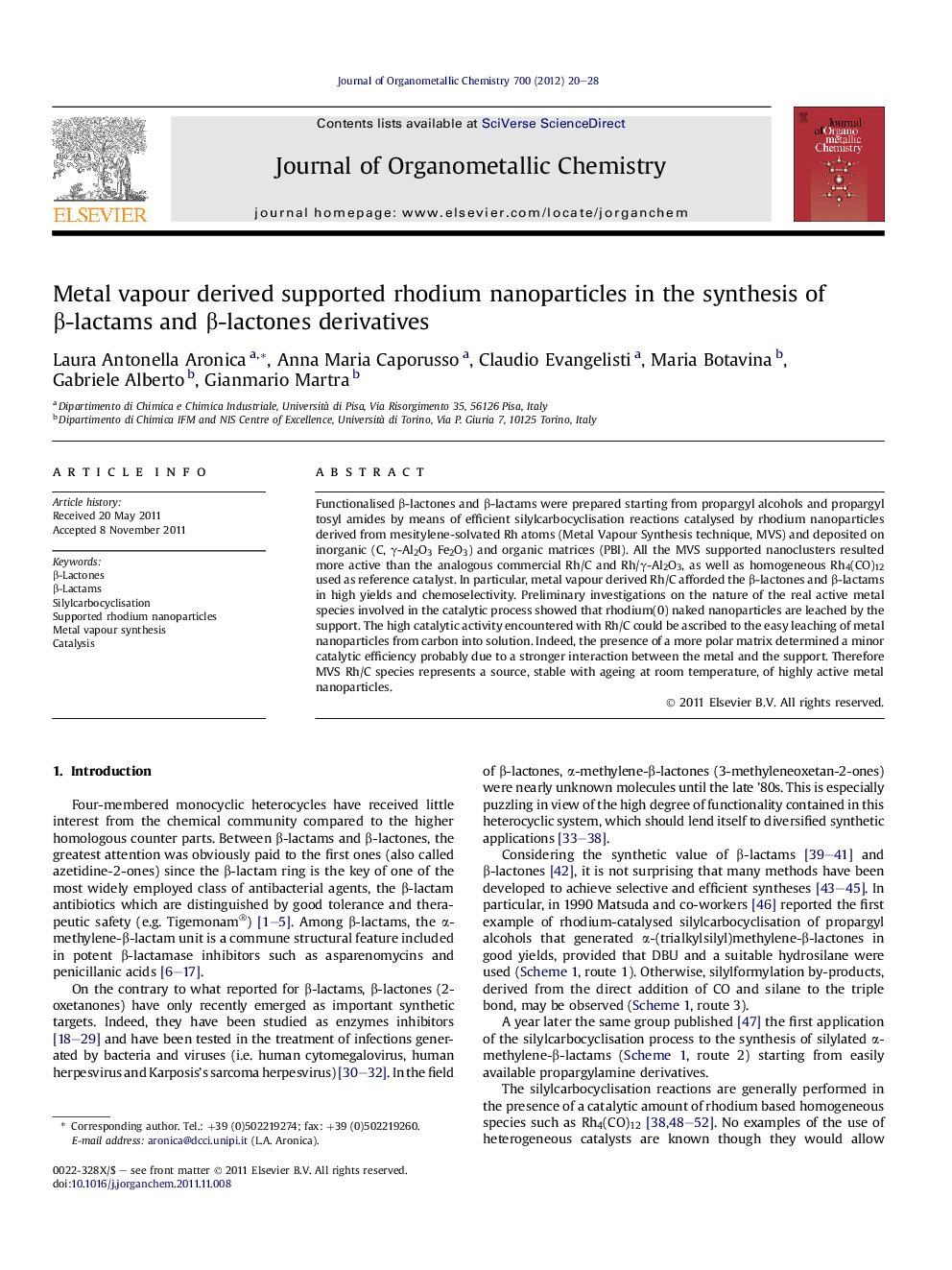| Article ID | Journal | Published Year | Pages | File Type |
|---|---|---|---|---|
| 1323498 | Journal of Organometallic Chemistry | 2012 | 9 Pages |
Functionalised β-lactones and β-lactams were prepared starting from propargyl alcohols and propargyl tosyl amides by means of efficient silylcarbocyclisation reactions catalysed by rhodium nanoparticles derived from mesitylene-solvated Rh atoms (Metal Vapour Synthesis technique, MVS) and deposited on inorganic (C, γ-Al2O3 Fe2O3) and organic matrices (PBI). All the MVS supported nanoclusters resulted more active than the analogous commercial Rh/C and Rh/γ-Al2O3, as well as homogeneous Rh4(CO)12 used as reference catalyst. In particular, metal vapour derived Rh/C afforded the β-lactones and β-lactams in high yields and chemoselectivity. Preliminary investigations on the nature of the real active metal species involved in the catalytic process showed that rhodium(0) naked nanoparticles are leached by the support. The high catalytic activity encountered with Rh/C could be ascribed to the easy leaching of metal nanoparticles from carbon into solution. Indeed, the presence of a more polar matrix determined a minor catalytic efficiency probably due to a stronger interaction between the metal and the support. Therefore MVS Rh/C species represents a source, stable with ageing at room temperature, of highly active metal nanoparticles.
Graphical abstractFunctionalised β-lactones and β-lactams were prepared by means of silylcarbocyclisation reactions catalysed by rhodium nanoparticles supported on different matrices and generated via Metal Vapour Synthesis technique (MVS). All the prepared catalysts resulted more efficient than analogous commercial species but acted as stable reservoir of highly active soluble Rh nanoparticles.Figure optionsDownload full-size imageDownload as PowerPoint slideHighlights► β-lactams and β-lactones are prepared via silylcarbocyclization reactions. ► Metal vapour derived (MVS) Rh nanoparticles are efficient catalysts for these reactions. ► Rh/C (MVS) showed specific activity higher than commercial species. ►The MVS supported catalysts act as a source of very active soluble metal nanoparticles.
